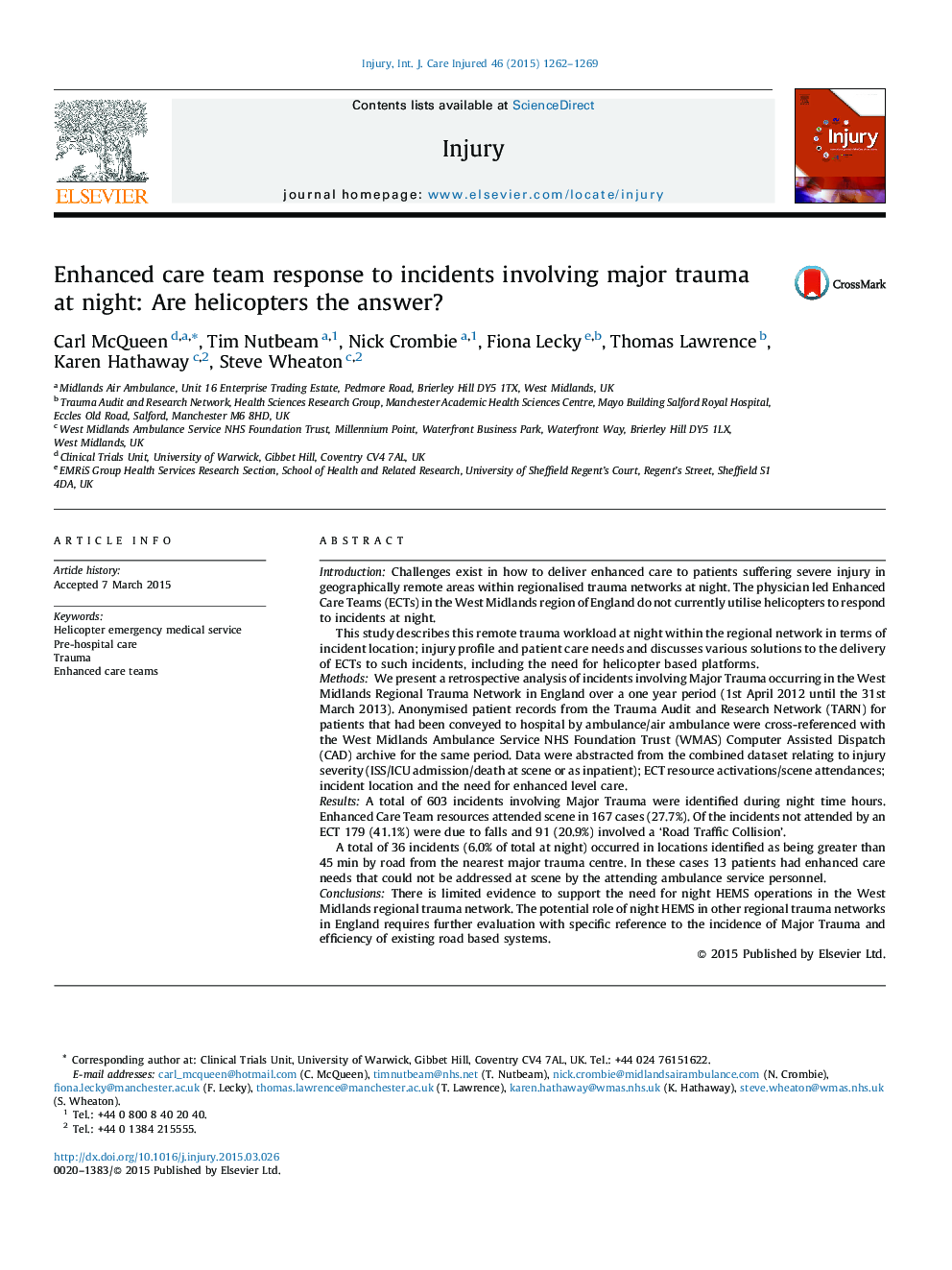| کد مقاله | کد نشریه | سال انتشار | مقاله انگلیسی | نسخه تمام متن |
|---|---|---|---|---|
| 6083297 | 1205989 | 2015 | 8 صفحه PDF | دانلود رایگان |
IntroductionChallenges exist in how to deliver enhanced care to patients suffering severe injury in geographically remote areas within regionalised trauma networks at night. The physician led Enhanced Care Teams (ECTs) in the West Midlands region of England do not currently utilise helicopters to respond to incidents at night.This study describes this remote trauma workload at night within the regional network in terms of incident location; injury profile and patient care needs and discusses various solutions to the delivery of ECTs to such incidents, including the need for helicopter based platforms.MethodsWe present a retrospective analysis of incidents involving Major Trauma occurring in the West Midlands Regional Trauma Network in England over a one year period (1st April 2012 until the 31st March 2013). Anonymised patient records from the Trauma Audit and Research Network (TARN) for patients that had been conveyed to hospital by ambulance/air ambulance were cross-referenced with the West Midlands Ambulance Service NHS Foundation Trust (WMAS) Computer Assisted Dispatch (CAD) archive for the same period. Data were abstracted from the combined dataset relating to injury severity (ISS/ICU admission/death at scene or as inpatient); ECT resource activations/scene attendances; incident location and the need for enhanced level care.ResultsA total of 603 incidents involving Major Trauma were identified during night time hours. Enhanced Care Team resources attended scene in 167 cases (27.7%). Of the incidents not attended by an ECT 179 (41.1%) were due to falls and 91 (20.9%) involved a 'Road Traffic Collision'.A total of 36 incidents (6.0% of total at night) occurred in locations identified as being greater than 45Â min by road from the nearest major trauma centre. In these cases 13 patients had enhanced care needs that could not be addressed at scene by the attending ambulance service personnel.ConclusionsThere is limited evidence to support the need for night HEMS operations in the West Midlands regional trauma network. The potential role of night HEMS in other regional trauma networks in England requires further evaluation with specific reference to the incidence of Major Trauma and efficiency of existing road based systems.
Journal: Injury - Volume 46, Issue 7, July 2015, Pages 1262-1269
